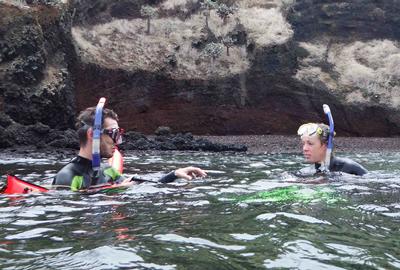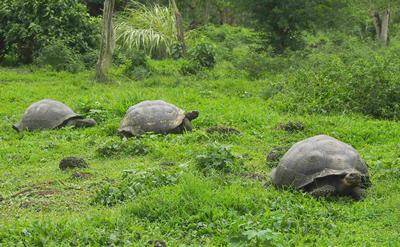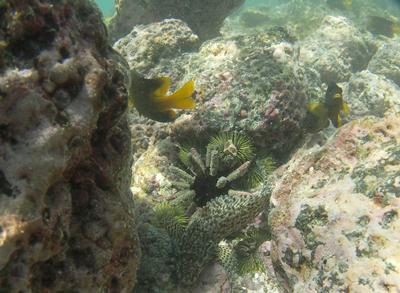Snorkelling and surveying off the Galapagos Islands in a unique field trip

Enthusiastic MSci Marine Biology undergraduates in their final year at the University of Southampton flew six thousand miles to the Galapagos Islands for a field trip with a difference. This remote archipelago, 600 miles off the coast of Ecuador, is home to unique species including giant tortoises, marine iguanas and Galapagos penguins, inspiring Charles Darwin to come up with his theory of evolution by natural selection after his visit in 1835.
Fifteen Integrated Masters students, led by Dr Ken Collins and Dr Antony Jensen, spent 15 days at the Galapagos National Park following a research programme developed with the aid of the Charles Darwin Research Station, in particular Inti Keith who is studying for a PhD under Ken’s supervision and is based in Galapagos.

Ken, an expert diver, has been a frequent visitor to the Islands for 30 years. Among his research projects supported by the UK Darwin Initiative, he has investigated invasive marine species such as the non native seaweed Caulerpa, possibly taken there on the hulls of foreign ships, which is threatening to take over many bays. He also helped revise the Islands’ marine management plan enabling the Galapagos Marine Reserve to gain World Heritage protected status from the United National Education, Scientific and Cultural Organization (UNESCO).

“We usually take students to Atlantic waters for our regular field trip at the Bermuda Institute of Ocean Science but we thought they would benefit from carrying out practical research on these amazing islands that are both a living museum and a showcase of evolution,” says Ken Collins.
“It was a fantastic trip and it’s impossible to pick out the highlights,” says Integrated Masters Marine Biology student Jessica Howard. “There was so much to see on the Islands and it was a chance of a lifetime to go there as part of our studies.”

Antony Jensen was also impressed: “When you are there, you could almost believe you are in a David Attenborough documentary. It is a breathtakingly stunning national park with animals unique to the Islands, many having little fear of humans.”
Oceanography and Marine Biology degrees at the University of Southampton blend lectures and laboratory sessions with hands-on practical work on board research vessels within Solent waters and further afield.